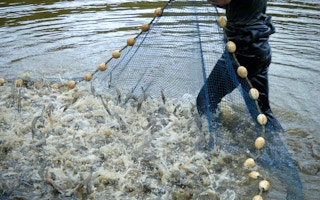Scientists around the world are racing to find a solution to a deadly disease that is spreading through shrimp farms in South-east Asia, killing shrimp en masse.
Earlier this year, the Global Aquaculture Alliance estimated that Early Mortality Syndrome (EMS), which emerged in China in 2009 and reached Thailand this year, is causing annual losses of more than US$1 billion (S$1.3 billion) across China, Vietnam, Malaysia and Thailand.
Thailand, the largest shrimp exporter in the world with last year’s exports worth 95.3 million baht (S$3.8 million), is being increasingly hit by a virus-triggered toxin which kills the shrimp.
“We are at a very early stage and there are different opinions,” said Dr Simon Funge-Smith, an aquaculture expert at the Food and Agriculture Organisation in Bangkok. “It is not clear yet how the virus is arriving in the ponds.”
The worst-affected countries are China, Vietnam, Malaysia and Thailand, which together account for 70 per cent of global shrimp exports. Losses caused by EMS are ruining some shrimp farmers across the region and driving up prices in importing countries.
Thailand’s shrimp production this year is expected to fall to 350,000 to 400,000 tonnes from around 500,000 tonnes last year, estimated Ms Karnda Kraikajornkitti, an executive at the Thai Shrimp Association.
There are around 30,000 to 40,000 shrimp farms in Thailand, most of them small-scale, Ms Karnda said. An average of 25 per cent to 30 per cent of farms in any given area are affected by EMS, she said.
The worst-hit area was eastern Thailand, but EMS recently affected farms in the south as well.
The association was hopeful that the situation would return to normal next year, she said.
The disease is caused by a virus that affects bacteria naturally present in the gut of the shrimp. The bacteria then create a toxin that kills the shrimp.
Outbreaks typically occur within the first 30 days after stocking a newly prepared shrimp pond, and mortality can exceed 70 per cent.
“One laboratory in the US claims to have replicated the effect of the virus,” Dr Funge-Smith said. “Right now other labs are trying to do the same. It is only when labs are able to recreate this that you understand the mechanism of the disease and can then take steps to manage it. Until then, it is shooting in the dark.”
The vulnerability of shrimp farms is linked to the fact that they are usually open-air systems with water flowing in and out.
Converting them to closed systems using mostly recycled water is expensive. And with profit margins low, few shrimp farmers can afford the systems.
Race on to fight deadly shrimp disease

Terpopuler
-
![Solar Power Plant Telangana II in state of Telangana, India, 12-MWp DC]()
Opini / Energi
India’s road to net zero needs a renewable energy boost
India's power distribution companies need a least cost-based procurement strategy and a people-centric energy transition to achieve net … -
![Solar_Smog_Delhi_India]() A new study in India highlights that rising air pollution and climate change could reduce solar photovoltaic efficiency.
A new study in India highlights that rising air pollution and climate change could reduce solar photovoltaic efficiency. -
![Nepal community forestry - women]()
Berita / Kebijakan & Keuangan
Nepal’s forest-protecting communities could miss out on World Bank carbon funds
The World Bank is set to pay the country up to US$45 million in results-based financing to reduce … -
![farmer drought indonesia]()
Opini / Karbon & Iklim
The climate crisis is also an inflation crisis
Rising prices and climate change are closely linked. Rather than being treated solely as an environmental issue, climate … -
![Thermal_Plant_Emissions_Air_Quality]()
Berita / Karbon & Iklim
Air pollution measures fail to address thermal power emissions
Thermal power plants emit many times more PM2.5 and sulphur dioxide than stubble burning says a recent analysis. -
![AI_Disruption_BPO_Worker_Philippines]()
Berita / Kebijakan & Keuangan
Bans, breakups and AI: Four digital frontiers for 2025
From artificial intelligence changing jobs to social media bans and TikTok turmoil, here are four tech trends that …









